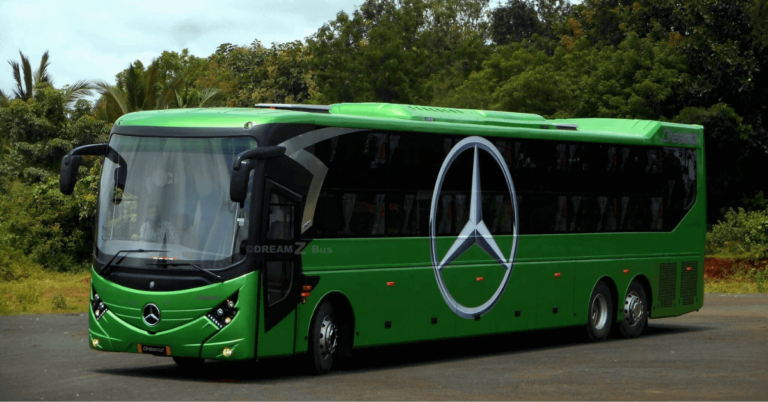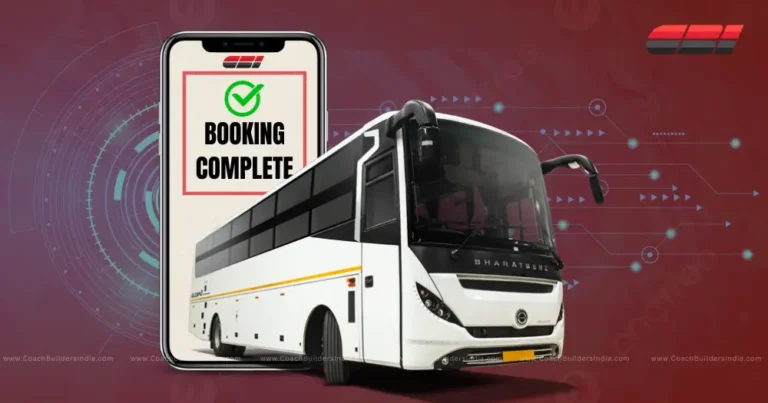What is a Bus Retarder? A Simple Guide for Bus Operators

While bus retarders have been a part of Indian buses for over a decade, they remain somewhat unfamiliar to many bus operators.
During my conversations with operators, I often hear questions like: What exactly is a bus retarder? Do I really need a bus chassis with a retarder? Do bus retarders require extra maintenance?
Even though bus retarders have become increasingly common, there’s still some confusion around them.
That’s where this article comes in – to simplify everything you need to know. From how a bus retarder works to the types of routes where it’s most effective, we’ll break it all down in the simplest way possible.
This guide is specifically designed for bus operators, offering valuable insights to help you decide if a retarder-equipped bus is the right fit for your fleet.
To make things even more practical, we’ve included insights from industry veterans like Sunil Ravindran from Universal Travels, Solomon Dinakaran from Cee Jay Trans, and Mohit Bedi from Bedi Travels, who share their experiences to help you make an informed decision.
What is a Bus Retarder?
A bus retarder is a device that helps slow down the bus without relying entirely on the traditional brake system. Think of it as an extra set of “invisible brakes” that work alongside your regular brakes to make driving safer and smoother.
There are different types of retarders, but the most common ones are electromagnetic and hydraulic retarders:
- Electromagnetic Retarder: Uses magnetic fields to create resistance in the drivetrain, which helps slow the vehicle.
- Hydraulic Retarder: Uses fluid resistance within the transmission system to reduce speed.
Both types work by creating resistance, which helps to reduce the speed of the bus smoothly without sudden jerks.
How Does a Bus Retarder Work?
To understand how a retarder works, imagine riding a bicycle down a hill. If you use the brakes too much, the brake pads heat up and wear out quickly.
But if you apply a little resistance by gently pressing the brakes or using the gears to slow down, you can control your speed without overworking the brakes.
A retarder works similarly by providing resistance to slow the bus down. This means the driver doesn’t have to rely solely on the brake pedal, which reduces the wear and tear on the brake system.
How is a Bus Retarder Beneficial?
1. Improved Safety
Retarders enhance overall bus safety by offering smooth and controlled deceleration. This reduces the risk of sudden stops that can be uncomfortable for passengers and dangerous in emergencies.
Sunil Ravindran, Managing Partner, Universal Bus Services highlights that bus retarders play a key role in the safety of passengers and drivers.
“The resistance generated by the fluid in a hydraulic retarder system helps reduce speed smoothly. This means when we decelerate, it’s not a sudden jolt but a controlled, gentle slowdown. That’s very important for passenger comfort and safety,” he adds.
2. Better Fuel Efficiency
Retarders contribute to better fuel management by enabling smoother deceleration and reducing unnecessary braking, which can improve overall engine efficiency.
Mohit Bedi from Bedi Travels notes, “With the automated braking support from retarders, the engine operates more efficiently, especially on highways, leading to better fuel usage over time.”
In one of our articles on increasing bus mileage, Solomon Dinakaran, Owner of Tamil Nadu-based Cee Jay Trans, shared how bus retarders can enhance fuel efficiency by up to 0.5 kilometers per liter.
“For example, if a standard bus typically delivers 3 kilometers per liter, a bus with a retarder could boost fuel efficiency, achieving 3.5 to even 4 kilometers per liter,” he explained.
3. Reduces Wear and Tear on Brakes
By sharing the workload with the traditional braking system, bus retarders help reduce the strain on brake drums and pads. This leads to less frequent maintenance and longer-lasting brakes.
Sunil Ravindran adds, “Normal braking causes faster wear, but bus retarders take some of that load off. This helps in controlled deceleration and less frequent brake repairs.”
4. Prevents Brake Overheating Esp., On Hilly Routes
According to Mohit Bedi, on long downhill drives, continuous use of traditional brakes can lead to overheating, increasing the risk of brake failure.
Retarders prevent this by taking over much of the braking work, ensuring safer descents.
Also Read: 6 Ways Operators Can Improve Bus Ratings on redBus
5. Increases Lifespan of Tyres and Brake Mechanism
Consistent braking and controlled deceleration reduce the stress on tyres and brake components. This reduces excess strain and extends the lifespan of bus tyres and the entire brake mechanism.
“Retarders bring consistency to the braking system. Since it’s automated, it adapts according to the needs, which helps improve tyre life and overall brake efficiency,” said Mohit Bedi, sharing his insights.
6. Overall Cost Savings
Although a bus chassis equipped with a retarder may cost more than one without a retarder, the long-term savings from reduced brake maintenance, extended tyre life, and better fuel efficiency make it a cost-effective investment.
Sunil Ravindran emphasizes, “Over time, the reduction in wear and tear and the efficiency gains easily offset the upfront cost of adding a retarder to the bus.”
When Should You Buy a Retarder-Equipped Bus?
Now that you know the benefits, let’s talk about whether you should invest in a bus with a retarder.
1. Routes Where Retarders Are a Must
If your buses regularly travel through mountainous regions or steep highways, a retarder is almost a necessity. It provides the control and safety needed to navigate challenging terrains.
Mohit Bedi, emphasizes, “For mountainous regions, bus retarders are indispensable! A majority of our operations are in hilly terrains that involve slopes, curves, steep descents, and bus retarders have proved to be very beneficial.”
2. City vs. Highway Driving: Do You Really Need One?
While bus retarders are incredibly useful on highways and hilly roads, they might not be as necessary for city driving.
Sunil Ravindran points out, “Within a city kind of environment, for intra-city movement, we don’t typically need a retarder.”
In urban settings where speeds are lower, and stops are frequent, the benefits of a retarder are less noticeable. The frequent stop-and-go nature of city traffic doesn’t allow the retarder to operate effectively.
Does a Bus Retarder Affect Mileage?
One common concern among bus operators is whether a retarder affects fuel mileage. The answer is both yes and no, depending on how it is used.
When used correctly, retarders can improve fuel efficiency by allowing smoother driving patterns, especially on highways.
If the retarder is overused or improperly managed, it might slightly increase fuel consumption. However, this is usually offset by the reduction in brake maintenance and longer tyre life.
Example: Consider a bus operator running on a hilly route between Dehradun and Mussoorie. Without a retarder, the driver frequently uses the brakes, causing them to wear out quickly and consume more fuel due to inefficient braking patterns. With a retarder, the bus slows down smoothly, the brakes last longer, and the overall fuel efficiency improves.
Overall, the fuel savings from smoother deceleration and less frequent braking usually outweigh any minor increases in fuel consumption.
Also Read: 10 Easy Ways Operators can Increase Bus Mileage
Do Drivers Need Special Training to Use a Bus Retarder?
Absolutely! Even though retarders are designed to be simple and often work automatically, drivers need to understand how to use them effectively.
- Smooth Operation: Knowing when to engage the retarder ensures smoother driving, which is safer for passengers.
- Maximizing Efficiency: Proper use of a bus retarder helps in saving fuel and reducing wear and tear on the bus.
- Safety Protocols: In emergency situations, understanding how the retarder interacts with the regular brakes can make a big difference.
Example: A driver on a steep downhill slope who knows how to balance the use of a retarder with regular brakes will prevent overheating and ensure a safe descent.
Contact Your OEM for Training
If your driver has not been trained on bus retarders, you, bus operators can directly contact the Original Equipment Manufacturer (OEM). OEMs normally send their experts to provide training on how to properly operate a bus retarder.
This ensures your drivers use the system efficiently, maximizing safety and minimizing wear and tear.
Also Read: How to attach your bus in redBus in 2025? A Step-by-Step Guide
Common Myths About Retarders
- Myth: Retarders Replace Regular Brakes
- Truth: Retarders are not a replacement but a supplement to the braking system. They work alongside brakes to enhance safety and efficiency.
- Myth: Retarders Are Only for Luxury Buses
- Truth: Retarders are beneficial for all types of buses, especially those operating on highways, hills, or long-distance routes.
- Myth: Retarders Always Decrease Mileage
- Truth: When used correctly, retarders can improve overall fuel efficiency by reducing unnecessary braking and maintaining smooth driving.
Final Thoughts
Investing in a bus chassis with a retarder can significantly improve safety, reduce maintenance costs, and offer better fuel efficiency—especially for operators running on highways or hilly terrains.
Before making a purchase, consider the routes your buses operate on, and don’t forget to train your drivers.
A little investment in technology and training can go a long way in making your bus operations smoother, safer, and more cost-effective.
Catch the latest Bus Industry updates, Exclusive Interviews, Bus News, and International Bus News on Coach Builders India. Download the latest issue of the The Bus Insider magazine for more insights.











